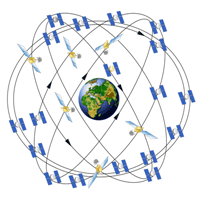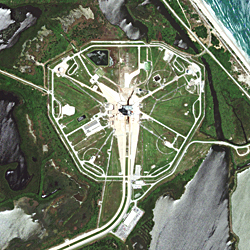
An increasingly likely $97.4-million cut in the GPS OCX budget for fiscal year 2010 (FY10) would slow down work on modernization of the operational control segment, but the Air Force would try to recoup any reduction in the FY11 budget.
Meanwhile, technical problems that have delayed development of the follow-on generation of Block IIF satellites are largely resolved and a first launch is expected in May 2010.
An increasingly likely $97.4-million cut in the GPS OCX budget for fiscal year 2010 (FY10) would slow down work on modernization of the operational control segment, but the Air Force would try to recoup any reduction in the FY11 budget.
Meanwhile, technical problems that have delayed development of the follow-on generation of Block IIF satellites are largely resolved and a first launch is expected in May 2010.
Lt. Gen. Tom Sheridan, commander of the Space and Missile Systems Center (SMC) at Los Angeles Air Force Base, offered those assessments in response to questions from Inside GNSS during a press conference today (September 17, 2009).
The version of the Deparment of Defense (DoDO Appropriations bill, H.R. 3326, passed by the House of Representatives on July 30 reduced the OCX allocation because of contract delays in the OCX program. On September 10, the Senate Appropriations Committee passed H.R. 3326 out to the Senate floor with the OCX cuts still intact.
“[The reduction] will slow us down a little in the first year of the contract,” Sheridan said, adding that the GPS Wing at SMC still plans to get a contract signed in December. FY10 begins October 1.
He added, “I would hope that as we discuss the FY11 budget with Congress, that they will see the work we are doing” and augment the next year’s budget to enable the program to get back on schedule.
IIF Space Vehicle 1 (SV1) is undergoing final integration & system test (FIST) at the Boeing assembly plant now, and Sheridan said he sees “no showstoppers” and that the spacecraft is expected to be shipped to Cape Canaveral in the December-January timeframe. “I think we’re past the problems.”
“The biggest issue is getting a slot in the launch manifest,” he added. The second IIF spacecraft, SV2, was sent to the launch facility in Florida earlier this year for a “pathfinder” exercise, “to find out how you flow a IIF through the launch procedure,” Sheridan said. “It went very well.”
Although no GPS satellites are available for launch, the constellation is currently overpopulated with 30 operational satellites and some older, on-orbit SVs that could be brought back into service. Sheridan expressed confidence that the Air Force would be able to maintain the constellation at or above its requirement of 24 operational spacecraft.




